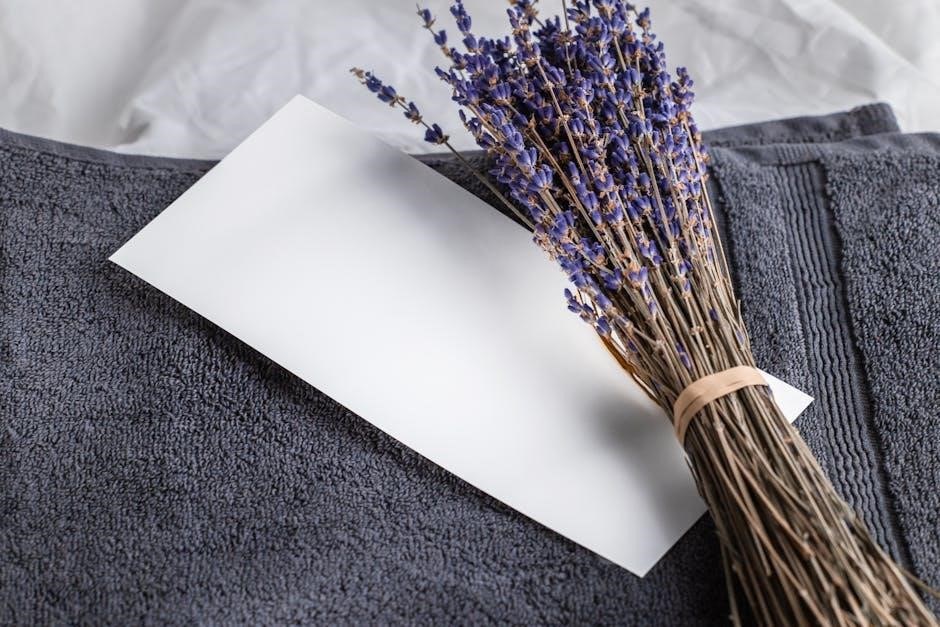Unleash your inner perfumer by crafting bespoke scents! Discover the enchanting world where essential oils meet artistic expression. Blend unique fragrances at home, moving away from commercial perfumes. Embrace natural ingredients, creating personalized aromas that reflect your individual style and preferences today.
Understanding the Basics of Perfume Making
Embarking on the journey of DIY perfume creation requires a foundational understanding of perfume construction. Perfumes are meticulously crafted blends, carefully layering scents that evaporate at different rates. These layers are known as notes: top, middle, and base. Think of it like composing music, each note harmonizing to create a complete olfactory experience.
Top notes provide the initial impression, they are light and volatile, creating that first burst of scent. Middle notes, the heart of the perfume, emerge as the top notes fade, providing the perfume’s core character. Base notes are the foundation, adding depth and longevity to the fragrance, anchoring the lighter notes.
The art lies in balancing these notes to create a harmonious accord. Understanding the characteristics of each note category, and how they interact, is crucial for successful blending. Experimentation is key, allowing you to discover unique combinations that resonate with your personal preferences. Remember, perfume making is both a science and an art, requiring patience and creativity to master. Consider the impact of each essential oil’s volatility and scent profile to achieve a well-rounded and captivating fragrance. Discover the joy in creating your very own signature scent!
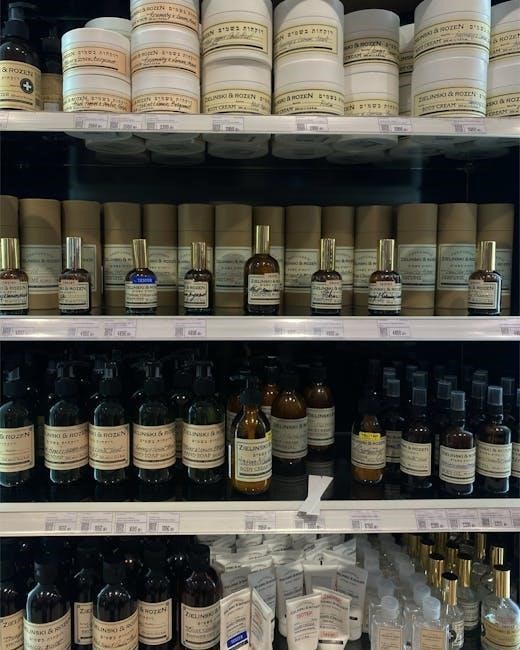
Essential Oils for Perfume Creation
Dive into the fragrant world of essential oils, the building blocks of natural perfumes. Explore a diverse palette of scents, from floral and citrus to woody and spicy. Discover the unique properties each oil offers, shaping your signature aroma today.
Top Note Essential Oils
Top note essential oils are the initial burst of fragrance in a perfume, creating the first impression. These oils are light, volatile, and evaporate quickly, lasting only about 30 minutes to two hours. They provide a fresh and uplifting quality to the blend, often described as bright, crisp, or citrusy. They play a crucial role in capturing initial attention.
Popular choices for top notes include citrus oils like lemon, lime, grapefruit, and sweet orange, offering zesty and invigorating scents. Herbal options such as peppermint, eucalyptus, and basil provide a refreshing and clean aroma. Certain floral oils like bergamot and neroli also function as top notes, adding a delicate floral touch.
When creating perfume blends, top notes are generally used in a higher proportion than middle and base notes, typically comprising 20-40% of the total blend. Their purpose is to provide an immediate and appealing fragrance that transitions smoothly into the heart of the perfume, making the initial impression memorable.
Middle Note Essential Oils
Middle note essential oils, often referred to as heart notes, form the core of a perfume’s fragrance. They emerge after the top notes evaporate and last for approximately two to four hours. These oils provide the main body and character of the perfume, harmonizing the top and base notes. They are typically warmer and softer than top notes.
Floral scents like lavender, rose, jasmine, and geranium are common middle notes, offering sweet and romantic aromas. Spice oils like cinnamon, clove, and nutmeg add warmth and complexity. Herbal notes such as rosemary, thyme, and chamomile provide a calming and herbaceous touch.
Middle notes comprise 40-80% of a perfume blend, acting as the bridge between the fleeting top notes and the grounding base notes. They help to mellow the initial sharpness of top notes and complement the richness of base notes. They ensure a balanced and well-rounded fragrance, crafting a captivating and memorable scent profile.
Base Note Essential Oils
Base note essential oils are the foundation of any perfume, providing depth and longevity to the fragrance. They emerge last, after the top and middle notes have faded, and can last for several hours, or even days. These oils are typically rich, heavy, and grounding, adding warmth and complexity to the overall scent profile.
Common base notes include woody scents like sandalwood, cedarwood, and vetiver, which provide an earthy and grounding aroma. Resinous scents like frankincense, myrrh, and benzoin add a balsamic and slightly sweet touch. Vanilla and amber provide a warm and comforting sweetness.
Base notes comprise 5-20% of a perfume blend, anchoring the lighter top and middle notes and preventing them from evaporating too quickly. They contribute to the perfume’s overall character, adding richness and depth. A well-chosen base note ensures a long-lasting and memorable fragrance, leaving a lasting impression.
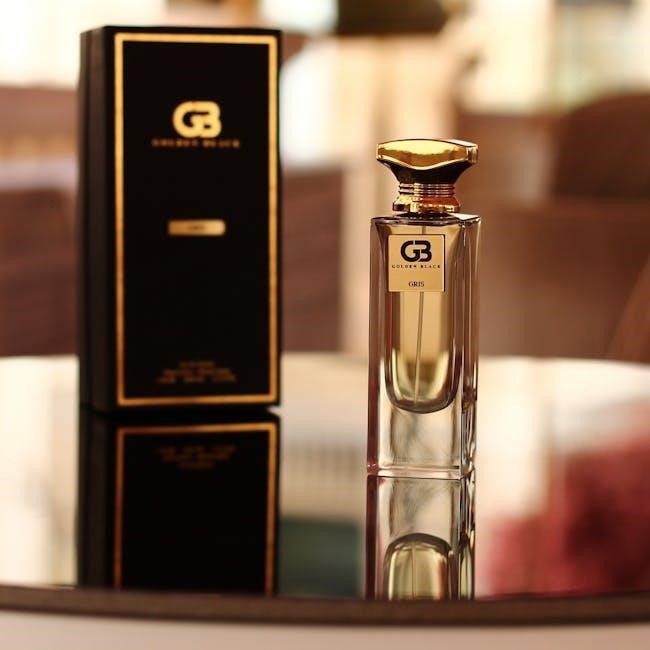
Creating Perfume Blends
Crafting captivating perfume blends involves artistry and knowledge of fragrance families. Understanding how top, middle, and base notes interact is crucial. Experimentation is key to discovering unique and harmonious combinations; Unleash your creativity and design signature scents with essential oils today.
Balancing Top, Middle, and Base Notes
The art of perfume creation hinges on the delicate balance of top, middle, and base notes. Top notes, the initial burst of fragrance, are light and fleeting, offering an immediate impression. Citrus and herbal scents often grace this layer, providing a refreshing introduction. Middle notes, the heart of the perfume, emerge as the top notes fade, forming the core character. Floral and spice notes commonly reside here, lending warmth and depth. Base notes, the foundation of the fragrance, linger the longest, providing a lasting impression.
Woody and resinous scents anchor the blend, ensuring longevity and complexity. Achieving harmony between these layers requires careful consideration. Experiment with different proportions, typically following a 3:5:2 ratio of top, middle, and base notes. However, this is merely a guideline, and personal preference should always prevail. Understanding each note’s volatility and scent profile is paramount to crafting a well-rounded and captivating perfume blend for everyone.
DIY Perfume Recipes
Explore handcrafted perfume recipes using essential oils! Discover simple instructions to create unique, natural scents at home. From floral bouquets to woody blends, tailor fragrances reflecting your individual style. Embrace the art of DIY perfumery and create lasting impressions today.
Spring Perfume Blends
Welcome the season of renewal with delightful spring perfume blends using essential oils. Capture the essence of blooming gardens and fresh breezes with these invigorating recipes. These blends are often created using distilled water, your favorite essential oils, and Everclear grain alcohol for a perfect mix.
Consider a vibrant blend of lemon, grapefruit, and peppermint for an uplifting and zesty aroma. Alternatively, create a floral symphony with lavender, chamomile, and rose essential oils, evoking the serenity of a blooming meadow. For a touch of earthiness, incorporate a hint of cedarwood or sandalwood to ground the fragrance.
Experiment with different combinations to discover your signature spring scent. Remember the classification of essential oils into top, middle, and base notes, to create balanced and long-lasting perfumes. Spring is a perfect time to explore the endless possibilities of DIY perfumery, creating fragrances that reflect the season’s vibrancy and joy. These recipes will bring the freshness of spring into your daily life.
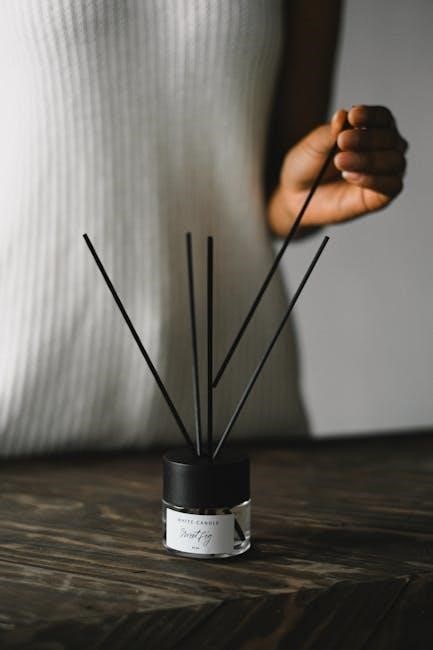
The Role of Alcohol in Perfume Making
Alcohol acts as a crucial solvent, blending essential oils seamlessly; It helps diffuse the scent, carrying fragrance notes effectively. Everclear grain alcohol, due to its high proof, is often preferred. It ensures a clean, lasting aroma, avoiding unwanted residues.
Using Everclear Grain Alcohol
Everclear grain alcohol is a popular choice for DIY perfume making due to its high concentration of ethanol. This purity is vital, ensuring that it dissolves essential oils effectively, creating a homogenous and clear perfume blend. The higher the proof of the alcohol, the better it will bind with the oils, preventing separation and cloudiness in the final product.
When working with Everclear, safety is paramount. It is a highly flammable substance and should be handled with care, away from open flames or heat sources. Proper ventilation is essential during the mixing process to avoid inhaling excessive fumes.
Using Everclear allows the true scent of the essential oils to shine through, without adding unwanted odors. Its neutral profile ensures the fragrance remains authentic and unadulterated. Remember to store your finished perfumes in dark glass bottles to protect the essential oils from light degradation, preserving their potency and aroma over time. The choice of alcohol significantly influences the quality and longevity of your homemade perfumes.
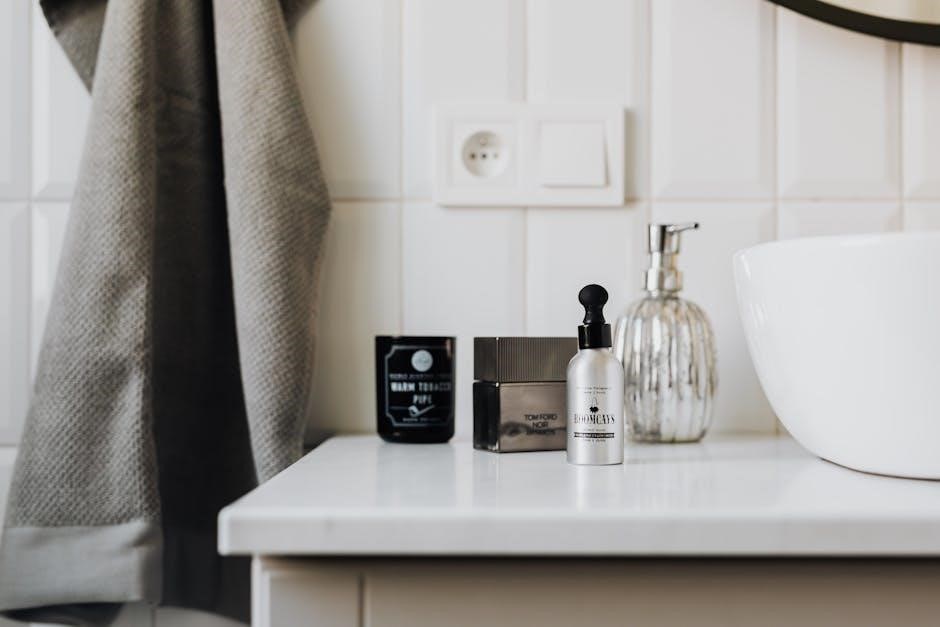
Resources for Essential Oil Information
Delve deeper into aromatherapy with specialized resources. Explore books detailing essential oil properties and blending techniques. Expand your knowledge base for creating harmonious, fragrant perfumes. Learn about therapeutic benefits and safe usage guidelines for informed DIY creations today.
Essential Oils for Perfume and Aromatherapy Books
Unlock the secrets of scent creation with essential oil and aromatherapy books. These resources offer a wealth of knowledge, guiding you through the intricacies of blending and formulation. Discover the properties of over 150 essential oil varieties, understanding their unique scent profiles and therapeutic benefits for informed perfume making.
Explore the art of crafting bespoke fragrances, drawing inspiration from expert recipes and blending techniques. These books provide detailed classifications of essential oils, categorizing them into top, middle, and base notes based on their volatility and scent characteristics, crucial for perfume construction.
Whether you’re a novice or an experienced aromatherapy enthusiast, these books cater to all skill levels. Learn how to balance different notes, ensuring a harmonious and long-lasting fragrance. Delve into the world of DIY aromatherapy, discovering recipes for everyday living and well-being. Elevate your perfume-making journey with invaluable insights from trusted sources, crafting scents that captivate the senses and promote holistic wellness. Embrace the fragrant artistry and create perfumes that truly resonate with your unique style.
